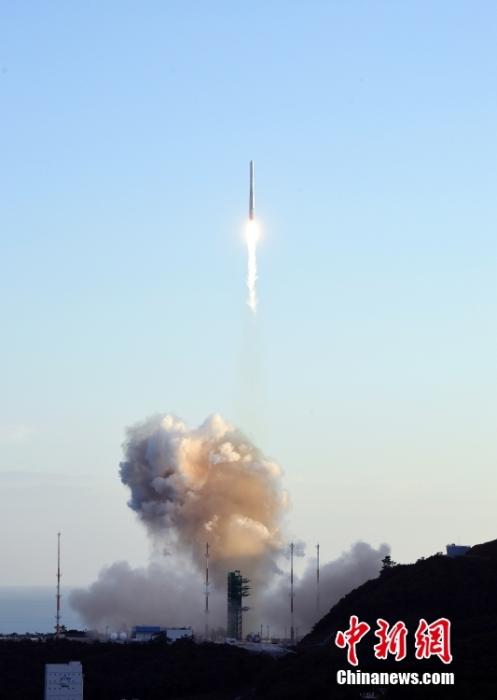China News Service, October 22, reported that on the 21st, when the "World" carrier rocket independently developed by South Korea was launched for the first time, it failed to put the model satellite on board into the predetermined orbit.
In order to improve the performance of the "World" launch vehicle, South Korea will launch several more launch vehicles in the future.
At 17:00 local time on October 21, South Korea’s self-developed "World" carrier rocket was ignited and launched at the Rao Space Center in Gwanggyeong County, Jeollanam-do.
The rocket completed all flight procedures normally, but failed to send the model satellite on board into its intended orbit.
Photo courtesy of the Ministry of Science, Technology, Information and Communication issued by China News Service
According to reports, the "World" launch vehicle is South Korea's first fully self-developed launch vehicle, with a total length of 47.2 meters and a weight of 200 tons.
On the 21st, the rocket was launched successfully, the first and second stages were separated normally, and the fairing was also separated normally, but the third-stage engine stopped working early.
Although the model satellite was successfully released at an altitude of 700 kilometers, it failed to enter the intended orbit due to its failure to reach a flight speed of 7.5 kilometers per second.
South Korean media said that the purpose of launching the "World" was to confirm the normal flight of the Korean-type projectile, and the launch has confirmed the flight performance of the projectile.
Han Yongmin, Director of Projectile Engine Development of the Korea Aerospace Research Institute, said that South Korea has successfully completed the entire engine development cycle and has experience in this area. "Experience in this area is very important."
South Korea’s next goal is to send a 1.5-ton practical satellite into low Earth orbit at an altitude of 600-800 kilometers from the ground.
The second launch scheduled for May 2022 will be an important test. The performance verification satellite will be carried on the launch vehicle together with the 1.3-ton satellite model. Although it is not equipped with a practical satellite, it can ensure the ignition and flight of the launcher. And separate flight data, and communicate with the ground to confirm whether the satellite enters a normal orbit, and verify whether the satellite components developed with domestic technology are operating normally.
After passing the first and second launches to complete the "World" launch performance verification, there will be a total of four launches in December 2022, 2024, 2026, and 2027. "The number two next-generation small satellites, the third next-generation medium-sized satellites, and 11 ultra-small satellites that are actually in operation are carried on board.
The South Korean government’s goal is to actively participate in international space exploration projects on this basis.

